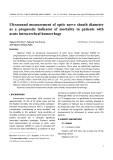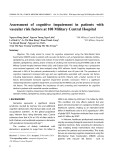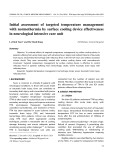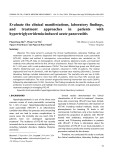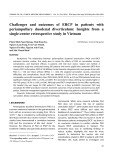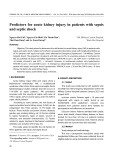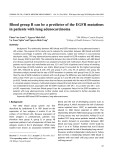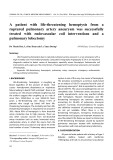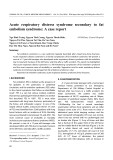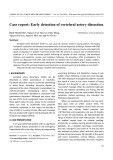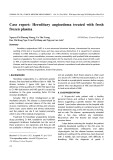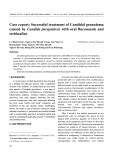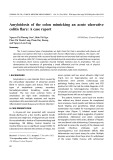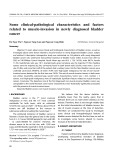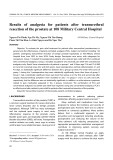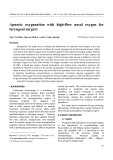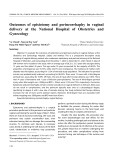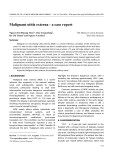
HUE JOURNAL OF MEDICINE AND PHARMACY ISSN 3030-4318; eISSN: 3030-4326HUE JOURNAL OF MEDICINE AND PHARMACY ISSN 3030-4318; eISSN: 3030-4326
160 161
Hue Journal of Medicine and Pharmacy, Volume 15, No.2/2025 Hue Journal of Medicine and Pharmacy, Volume 15, No.2/2025
*Corresponding author: Nguyen Minh Tu. Email: nmtu@huemed-univ.edu.vn
Received: 23/2/2025; Accepted: 15/3/2025; Published: 28/4/2025
DOI: 10.34071/jmp.2025.2.23
Survey on the eating behavior of first-year medical students at
University of Medicine and Pharmacy, Hue University
Tran Thi Tao1, Nguyen Ngo Bao Khuyen1, Hoang Thi Bach Yen1, Nguyen Thi Thanh Nhan1, Nguyen Thi Thanh Thao1,
Ho Uyen Phuong1, Bui Le Thao Phuong1, Tran Quoc Nhat Truong1, Pham Le Minh1, Phan Anh Kiet1,
Ngo Ngoc Hung1, Tran Thi Quy1, Le Dinh Duong1, Tran Binh Thang1, Phan Duc Thai Duy2, Nguyen Minh Tu1*
(1) University of Medicine and Pharmacy, Hue University
(2) Hue Medical College
Abstract
Background: Nutrition is closely related to human health. Unhealthy diet increases the risk of non-
communicable diseases such as cardiovascular disease, diabetes, hypertension, overweight and obesity.
Changing eating habits and unhealthy behaviors can last a long time and affect the future. Objectives: (1)
To describe the eating behaviors of first-year medical students at University of Medicine and Pharmacy, Hue
University, (2) To identify some factors related to the eating behaviors of these students. Methods: A cross-
sectional study was conducted on 312 students at Hue University of Medicine and Pharmacy from July 2023
to August 2024. Data were collected by direct interview based on a structured questionnaire. We used a
multivariate logistic regression model to identify factors associated with students’ eating behavior. Results:
There was 58.3% of students with poor behavior. Some factors associated with students’ eating behaviors
were sex, monthly allowance, physical activity, bedtime, time spent for using the Internet, desire to change
diet, with a significance level of p<0.05. Conclusion: Medical students have a high proportion of poor eating
behavior. Our study emphasizes the importance of getting more than six hours of sleep and reducing internet
use among students, while also providing education on healthy diets to encourage positive changes in eating
habits. Additionally, encouraging students to engage in physical activities contributes to maintaining a healthy
lifestyle.
Keywords: Eating behaviors, associated factors, medical students.
1. INTRODUCTION
Unhealthy diet increases the risk of non-
communicable diseases such as cardiovascular
diseases, diabetes, hypertension, and obesity.
According to the World Health Organization, non-
communicable diseases cause 41 million deaths
annually, accounting for 74% of all global deaths,
with 77% of these deaths occurring in low- and
middle-income countries [1].
University students aged 18 to 25 are in a
transitional phase from adolescence to adulthood,
during which they undergo significant changes in
eating behaviors, which refers to food consumption
shaped by environmental, social, and biological
factors [2]. Additionally, eating disorder, which
encompass a range of psychological conditions
characterized by profound disruptions in eating
habits and attitudes, are widely reported among
this population [3]. Previous studies indicated that
university students tend to consume high amounts
of sweetened foods, canned foods, and fast food,
while consuming low amounts of whole grains, nuts,
fruits, and vegetables. Prolonged these unhealthy
eating behaviors have been documented to not only
affect health but also reduce academic performance
[4-6].
A study at a university in Spain found that 61.0%
of students preferred pasta, followed by meat at
59.1% and salad at 32.5%. The least popular foods
were vegetables at 16.8%, fruits at 13.6%, dairy
products at 12.2%, and legumes at 9.8% [7]. Another
study in Vietnam revealed that 82.2% of students
consumed fast food, with 59.6% consuming it at all
main meals. This fast food consumption was often
accompanied by other types of food, especially
soft drinks, which appeared in half of the meals
[8]. Notably, eating behaviors have been found to
influence sleep quality. Specifically, students who
skipped breakfast, snacked late at night, or replaced
main meals with snacks had poorer sleep quality by
1.20 times, 1.24 times, and 1.25 times, respectively,
compared to others [9]. Additionally, poor eating
habits may prevent students from meeting nutrient
recommendations. For example, only 1 in 10
students in Australia met the recommendations for
fruit or vegetable consumption, and less than one-





